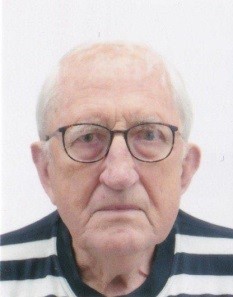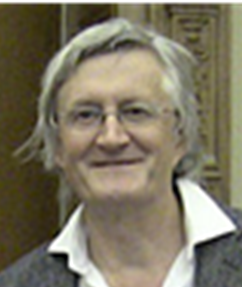
Nansen's Doctorate and the Neuron Doctrine - 130th Anniversary Symposium
Fridtjof Nansen was the first important and internationally known Norwegian scientist to study the brain. He was at the forefront of research at his time. Nansen's doctoral thesis, "The structure and combination of the histological elements of the central nervous system", formulated for the first time the idea later known as the Neuron Doctrine (that the nervous system consists of separate nerve cells rather than a continuum of tubes), on which subsequent brain research is based. Nansen also was the first to state the significance of the neuropil (the "dotted substance (the interlacing of nervous fibrillæ)" between the nerve cell bodies) as the site of nervous activity and communication underlying consciousness and intelligence.
The 130th anniversary symposium is sponsored by the Federation of European Neuroscience Societies (FENS) History of Neuroscience Committee and organized by Linda H Bergersen and Jon Storm-Mathisen under the auspices of the Norwegian Academy of Science and Letters. Nansen's dissertation day was 28th April 1888, but for practical reasons the symposium is on May 3rd , when the Academy has its Annual Meeting in the evening. The venue is the University's Gamle Festsal, where Nansen's dissertation took place 130 years ago.
Program
09:30 Coffee, pastries, refreshments, mingling in the antechamber
(food and beverage not allowed into Gamle Festsal)
09:50 Opening by the Academy President, Ole Sejersted
09:55 Introduction of speakers by Linda H Bergersen
10:00 Ortwin Bock (Cape Town): Historical lecture - "Nansen and the Neuron Doctrine"
10:40 Questions, moderated by Jon Storm-Mathisen
10:45 David Attwell (London): Neuroscientific lecture - "Energy expenditure for thinking"
11:25 Questions, remarks
11:30 End of symposium
Ortwin Bock (Cape Town): Historical lecture - "Nansen and the Neuron Doctrine"
At the beginning of 1800 nothing was known of the morphology of the nerve cell.
Mainly due to improved histological techniques -- notably stains and colour aberration-free microscopic lenses -- this had been completely turned around at the end of nineteenth century.
In addition two of the most important concepts in neuroscience -- the Neuron Doctrine and The theory of dynamic polarization -- had by then been formulated. I plan to relate some of the highlights of my 13-years old journey through the annals of the history of the neuron.
Short biography
Ortwin Bock, MD, PhD
A 13 Larmenier Village, Vredehoek 8001, South Africa
ortwinbock@iafrica.com +27 21 461 4948
Ortwin Bock lives in Cape Town where he was born in 1933. With a medical science degree from Pretoria University he continued his studies at Oxford in November 1953 and graduated in December 1958; he completed his doctorate four years later. Returning to South Africa he completed his training at Groote Schuur Hospital in Cape Town before joining the medical faculty of Stellenbosch University as a lecturer in medicine and gastro-enterology. In 1975 he opened a practice in Cape Town and tutored final year medical students at the University of Cape Town. His interest in the life and times of Fridtjof Nansen and the history of the neuron stems from early 2005 when he read Roland Huntford's Nansen while on an expedition to Antarctica. Bock has written several essays on historic themes in neuroscience and medicine, including the book "Nansen and the Neuron" (Bock O & Helle K 2016 Bodoni Forlag, Bergen).
David Attwell (London): Neuroscientific lecture - "Energy expenditure for thinking"
Brain energy use imposes profound constraints on our cognitive powers. Most brain energy use occurs at synapses: small connections that proved to exist in the interlacing of nervous fibrillæ observed by Fridtjof Nansen. Neuronal computation depends absolutely on an adequate supply of glucose and oxygen in the blood to power these synapses, and other aspects of neuronal signalling, but not all neurons can be active all of the time. I will show that different energy-saving mechanisms have evolved to increase our cognitive power. These include optimisation of synaptic vesicle release probability and number of postsynaptic receptors, minimisation of "wire length" from neuronal cell bodies to synapses in the brain, myelination of some axons, and neurovascular coupling mechanisms to increase blood flow to active areas of the brain. Neurovascular coupling is an example of a mechanism that normally increases cognitive power, but which can malfunction in pathology, leading to neuronal damage. I will show that neurovascular coupling mainly occurs via relaxation of contractile pericytes at the capillary level (rather than relaxation of smooth muscle cells around arterioles), and that in both stroke and Alzheimer's disease pericytes play a key role in reducing the energy supply to the brain. These discoveries may open up novel therapeutic options for treating stroke and Alzheimer's disease.
Short biography
David Attwell, Jodrell Professor of Physiology, FRS
Department of Neuroscience, Physiology & Pharmacology,
University College London, Gower St., London WC1E 6BT, UK
D.Attwell@ucl.ac.uk www.ucl.ac.uk/npp/da
David Attwell did a first degree in physics and a PhD on the electrophysiology of nerve and muscle cells (with Julian Jack) in Oxford, before spending 2 years in Berkeley studying the retina with Frank Werblin. On returning to the UK, he moved to the Department of Physiology at University College London, where he has remained ever since. He has worked on a wide range of subjects including the properties of glial cells, glutamate transporters, stroke, the formation of myelin by oligodendrocytes, how neuronal computation is powered and the control of cerebral blood flow. He was made a Fellow of the Royal Society in 2001.
On Fridtjof Nansen's contribution to neuroscience:
Nansen is to be credited as father of the Neuron Doctrine (the idea that the nervous system consists of separate nerve cells rather than a continuum of tubes, published in two papers in 1886) and for realizing the significance of the neuropil (the 'dotted substance' between the nerve cell bodies) as the site of communication between the cells (Edwards JS & Huntford R 1998 Fridtjof Nansen: from the neuron to the North Polar Sea. Endeavour 22(2):76-80; Huntford R 1997 Nansen - The Explorer as Hero. Reprinted 2009 Abacus, London).
Some salient statements in the thesis paper by Fridtjof Nansen (1887) The structure and combination of the histological elements of the central nervous system. Bergen Museums Aarsberetning for 1886, pp 25 - 214, Plates I - XI:
p144: "The tubes and fibrillæ forming the dotted substance do not anastomose with each other, but form, only, a more or less intricate web or plaiting."
p167: "The dotted substance (the interlacing of nervous fibrillæ) must be a principal seat of the nervous activity, through this substance or interlacing is the reflex-actions etc. communicated to the consciousness, which even possibly has its seat in this substance itself."
"..we can state, as a fact, that a plaiting or interlacing (not reticulation) of nervous fibrillæ extends
through the whole central nervous system of all animals.."
p171: "..the dotted substance must be a principal seat of the nervous activity".."an extremely intricate web of nerve-tubes ... and this web is probably the principal seat of intelligence." (the last words of the thesis paper)
(From The Fridtjof Nansen Science Symposium 2011 http://www.dnva.no/kalender/vis.html?tid=48780)
See also
Linda H Bergersen & Jon Storm-Mathisen 'Kavliprisen i nevrovitenskap: 120 år etter Nansen'
KRONIKK forskning.no 28.04.2008
https://forskning.no/meninger/kronikk/2008/04/kavliprisen-i-nevrovitenskap-120-ar-etter-nansen
Årbok for Universitetsmuseet i Bergen 2011 http://www.uib.no/universitetsmuseet/64551/%C3%A5rbok-2011
Karen B Helle 'Fridtjof Nansen som konservator ved Bergens Museum' pp 8-18
Ortwin Bock 'Fridtjof Nansen and the Nobel Prize in Physiology or Medicine of 1906' pp 26-36
Book
Ortwin Bock & Karen B Helle 'Fridtjof Nansen and the Neuron' Bodoni, Bergen 2016
(ISBN 978-82-7128-855-6)
http://bodoniforlag.no/butikk/fagboker/fridtjof-nansen-and-the-neuron/
